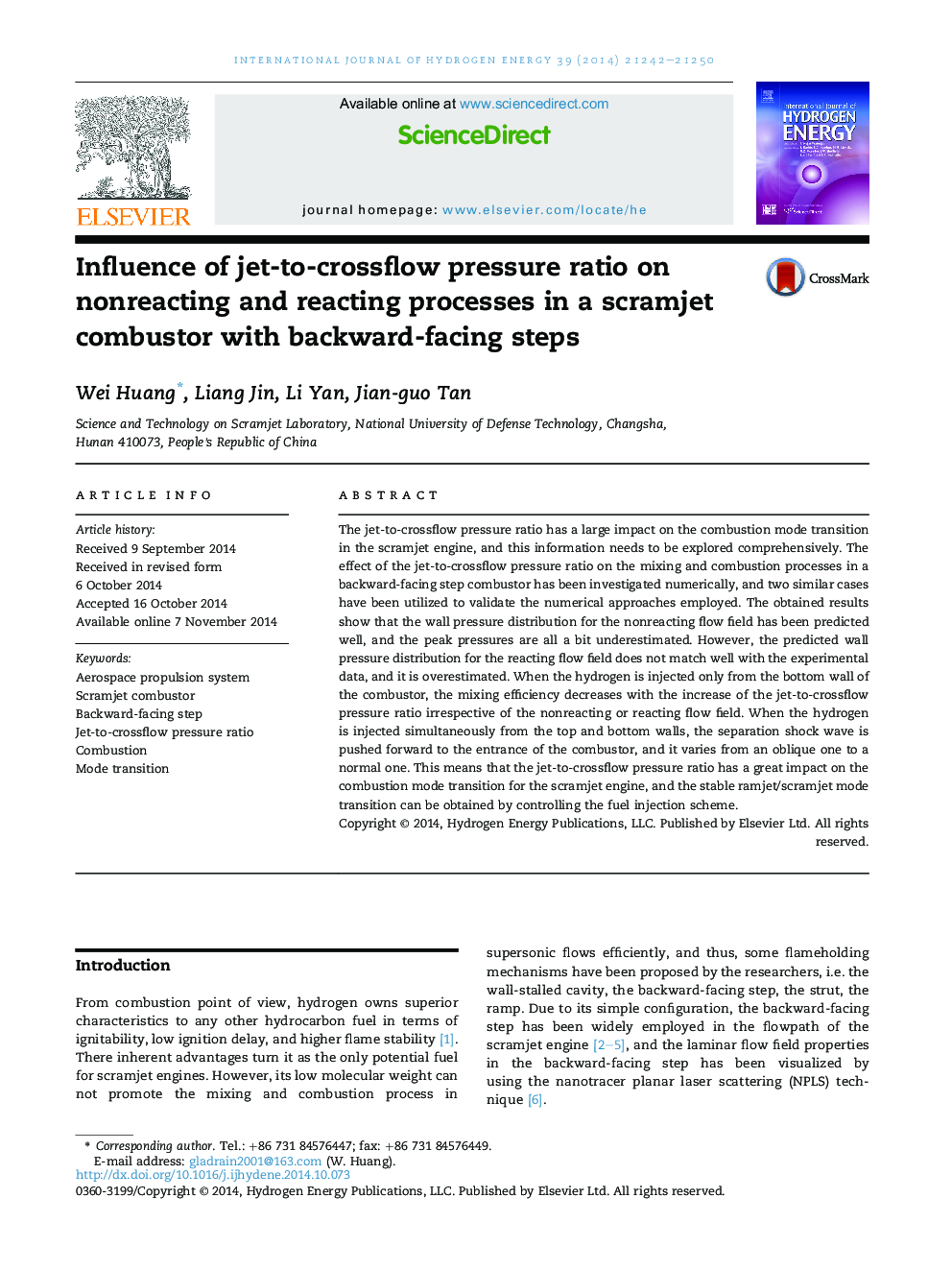| Article ID | Journal | Published Year | Pages | File Type |
|---|---|---|---|---|
| 7716885 | International Journal of Hydrogen Energy | 2014 | 9 Pages |
Abstract
The jet-to-crossflow pressure ratio has a large impact on the combustion mode transition in the scramjet engine, and this information needs to be explored comprehensively. The effect of the jet-to-crossflow pressure ratio on the mixing and combustion processes in a backward-facing step combustor has been investigated numerically, and two similar cases have been utilized to validate the numerical approaches employed. The obtained results show that the wall pressure distribution for the nonreacting flow field has been predicted well, and the peak pressures are all a bit underestimated. However, the predicted wall pressure distribution for the reacting flow field does not match well with the experimental data, and it is overestimated. When the hydrogen is injected only from the bottom wall of the combustor, the mixing efficiency decreases with the increase of the jet-to-crossflow pressure ratio irrespective of the nonreacting or reacting flow field. When the hydrogen is injected simultaneously from the top and bottom walls, the separation shock wave is pushed forward to the entrance of the combustor, and it varies from an oblique one to a normal one. This means that the jet-to-crossflow pressure ratio has a great impact on the combustion mode transition for the scramjet engine, and the stable ramjet/scramjet mode transition can be obtained by controlling the fuel injection scheme.
Keywords
Related Topics
Physical Sciences and Engineering
Chemistry
Electrochemistry
Authors
Wei Huang, Liang Jin, Li Yan, Jian-guo Tan,
